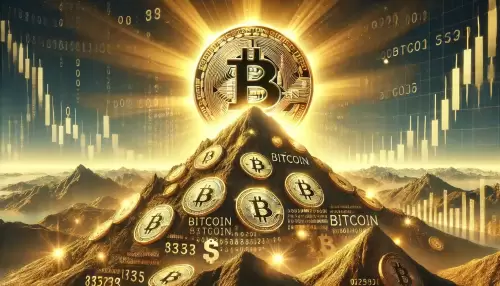 |
|
 |
|
 |
|
 |
|
 |
|
 |
|
 |
|
 |
|
 |
|
 |
|
 |
|
 |
|
 |
|
 |
|
 |
|

The Internet of Things (IoT) paradigm is being inverted by DePIN from a decentralized to a centralizing form - able to have open, scalable, and safer infrastructure networks.
DePIN Use Cases Real Life
1. Helium - Decentralized Wireless Network
Helium has pioneered development of a wireless IoT device crowd-sourced network.
"Hotspots" are installed by customers providing wireless coverage at low power (LoRaWAN).
In return for this, they are paid in HNT tokens for data transferred between the devices.
Already having over 1 million hotspots operational globally, Helium has proven that blockchain can initialize a telecom network quicker and cheaper than traditional players.
It has evolved since then to now include 5G and Wi-Fi connectivity, proving that DePIN can compete with telco.
2. Filecoin - Decentralized Storage
Filecoin turns spare storage into an asset. Individuals donate spare hard drive space on the network for the reward of being paid in FIL tokens.
A DePIN cousin, Filecoin decentralizes data storage infrastructure — reducing reliance on AWS or Google Cloud — and builds permissionless, censorship-resistant, secure storage.
Why it matters: Researchers, video platforms, and AI engineers have used Filecoin as a Web3-native cloud storage system.
3. DIMO - Vehicles' IoT
DIMO enables car owners to link their car to a decentralized network using an appliance or mobile app.
Connected, customers can sell driving, diagnostic, or position information for $DIMO tokens — creating a decentralized car-data marketplace.
This information can be resold or used in insurance, repair data, or fleet management software.
The DePIN Economy: Fueling the Real-World Web3
DePINs are creating a new economy of tokenized economies in which real-world infrastructure is made composable, programmable, and economically driven by smart contracts.
Messari estimates DePIN market potential to exceed $3 trillion by 2030 across sectors including:
Telecommunications (Helium, World Mobile)
Storage (Filecoin, Arweave)
Calculate (Akash, io.net)
Energy (Powerledger)
Mobility (DIMO)
Mapping & Weather (WeatherXM, Hivemapper)
These protocols provide tokenized incentives, DAO-based governance, and open data protocols — transforming physical infrastructure into an open-source, permissionless layer of the Web3 stack.
Key Benefits of DePIN
Democratization of Infrastructure
Any individual can contribute towards building infrastructure, geographically or monetarily wherever they may be, just by running a node and contributing to the cooperation of the network.
Cost Efficiency
Crowdsourced infrastructure is constructed more quickly and cost-effectively than the previous model. No tidal wave of money, no administration.
Enhanced Security and Privacy
Data is stored and transmitted in encrypted, decentralized networks — dramatically lowering the risk of surveillance or single point data breaches.
Resilience and Redundancy
DePIN networks are distributive in nature, which eliminates vulnerability to single points of failure compared to traditional infrastructure.
Challenges & Criticisms
There is realistic hindrance to what DePINs provide:
Hardware Costs: Node installation is expensive and maybe out of easy reach for ordinary users.
Regulation Uncertainty: Telecommunication and data services traditionally are accompanied by licensing or conformity requirements.
Token Economics: Incentives poorly conceived will result in unsustainable growth or misuse of hardware farming.
Network Effects: The early adopters will not generate much revenue unless there is adequate demand (actual usage), and this could create disillusionment.
Long-term sustainability is achieved by creating properly balanced token economies and generating real-world utility.
The Future: Building the "Physical Layer" of Web3
If blockchains are the Web3 logical layer, then DePINs are building the physical infrastructure layer. They're the glues between blockchain and the physical world — earth-ifying decentralization systems.
Imagine this world where:
You're being paid for offering Wi-Fi to your neighbors.
Your weather station is helping build climate models globally.
Your car telemetry data gives you passive income.
Your solar panel is selling excess energy to a decentralized grid.
That's the DePIN future — decentralized, autonomous, and hyperlocal.
DePINs are redefining infrastructure — from command and control to people-centered, token-rewarded networks. For builders, investors, and developers, it is one of the most exciting frontiers in Web3. As connectivity is as widespread as electricity, DePIN could be the decentralized infrastructure for the next generation of digital transformation.
Disclaimer:info@kdj.com
The information provided is not trading advice. kdj.com does not assume any responsibility for any investments made based on the information provided in this article. Cryptocurrencies are highly volatile and it is highly recommended that you invest with caution after thorough research!
If you believe that the content used on this website infringes your copyright, please contact us immediately (info@kdj.com) and we will delete it promptly.





























































